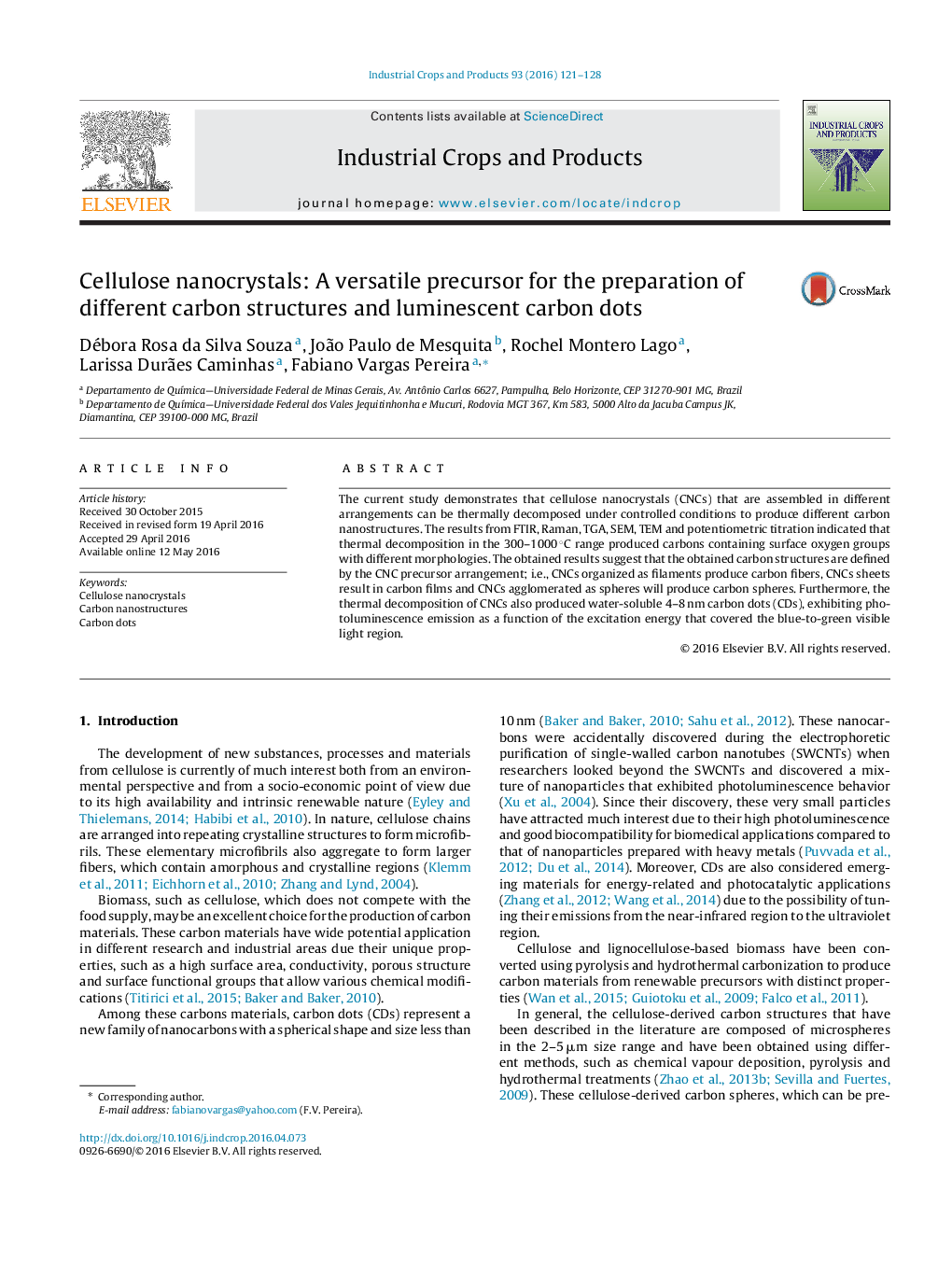| Article ID | Journal | Published Year | Pages | File Type |
|---|---|---|---|---|
| 4512061 | Industrial Crops and Products | 2016 | 8 Pages |
•Freeze-dried cellulose nanocrystals were thermally decomposed in the 300–1000 °C range.•The obtained carbons showed different morphologies such as rod-like, sheets and spheres.•Luminescent and water-soluble carbon dots (CD) were also obtained.•The CD showed a photoluminescence emission covering the blue-to-green visible.
The current study demonstrates that cellulose nanocrystals (CNCs) that are assembled in different arrangements can be thermally decomposed under controlled conditions to produce different carbon nanostructures. The results from FTIR, Raman, TGA, SEM, TEM and potentiometric titration indicated that thermal decomposition in the 300–1000 °C range produced carbons containing surface oxygen groups with different morphologies. The obtained results suggest that the obtained carbon structures are defined by the CNC precursor arrangement; i.e., CNCs organized as filaments produce carbon fibers, CNCs sheets result in carbon films and CNCs agglomerated as spheres will produce carbon spheres. Furthermore, the thermal decomposition of CNCs also produced water-soluble 4–8 nm carbon dots (CDs), exhibiting photoluminescence emission as a function of the excitation energy that covered the blue-to-green visible light region.
